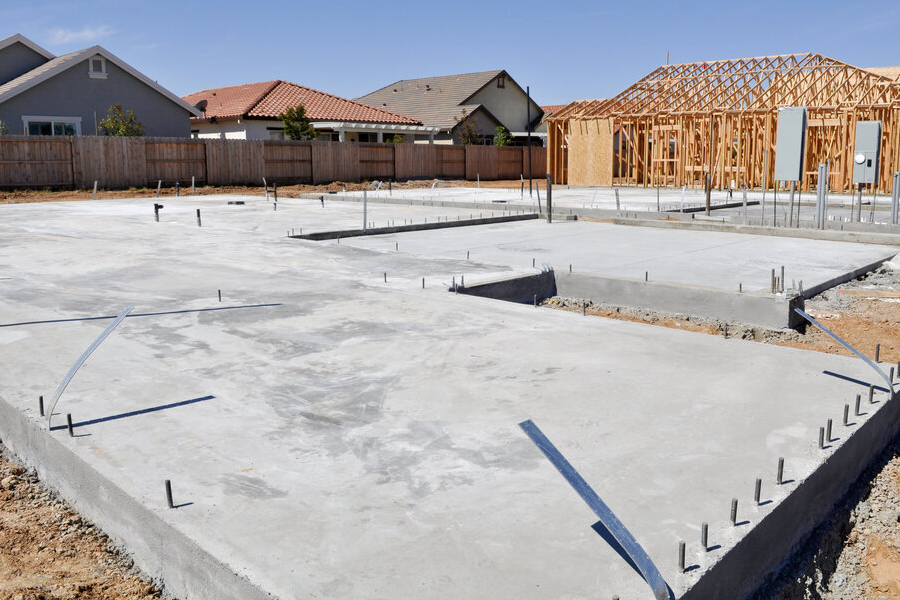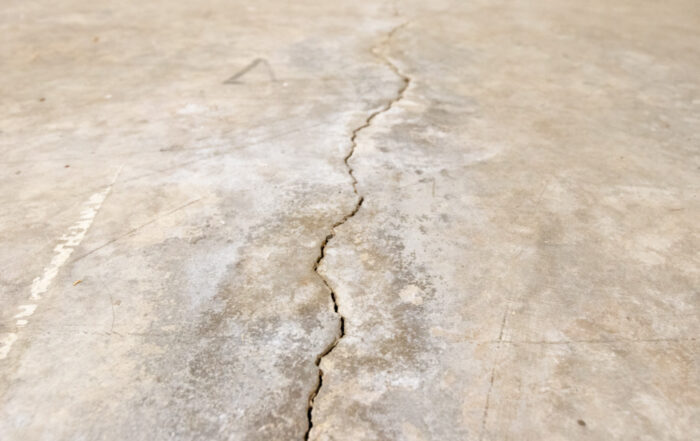Types of Home Foundations in Texas: What To Know Before A Home Purchase

The type of foundation a home is built upon plays a significant role in its structural stability, longevity, and resistance to environmental factors. In Texas, the diverse range of soil conditions and climate variations make foundation selection crucial.
Homeowners, builders, and developers need to choose foundations that can withstand expansive clay soils, droughts, floods, and shifting terrain, all of which are common challenges in the region.
Below is an overview of the most common types of home foundations in Texas, including their pros, cons, and suitability for specific conditions.
1. Slab-on-Grade Foundations
Slab-on-grade foundations are one of the most common foundation types used in Texas homes. This foundation consists of a thick concrete slab poured directly onto a level surface, typically reinforced with steel bars or wire mesh for added strength.
Advantages:
- Affordability: Slab-on-grade is cost-effective because it requires less excavation and fewer materials.
- Low Maintenance: There are no crawl spaces or basement areas that need upkeep, reducing maintenance.
- Energy Efficiency: The solid slab helps retain indoor temperatures, improving energy efficiency.
Disadvantages:
- Vulnerability to Soil Movement: Expansive clay soil, prevalent in many parts of Texas, can cause the slab to crack as the ground shifts.
- No Storage Space: Slab foundations do not allow for basements or crawl spaces, limiting storage options.
Best Suited For:
- Areas with stable, well-draining soil and low flood risk, such as parts of Central and West Texas.
2. Pier and Beam Foundations
Pier and beam foundations elevate the house above the ground using concrete piers (or wooden posts) and beams. The space between the house and the ground creates a crawl space, which can accommodate plumbing and electrical installations.
Advantages:
- Better Moisture Protection: Lifting the home off the ground reduces exposure to moisture and flooding.
- Easier Repairs: Plumbing and electrical repairs are easier to access through the crawl space.
- Adaptable to Shifting Soil: Pier and beam systems can better tolerate shifting soil, as piers can be adjusted over time.
Disadvantages:
- Higher Construction Costs: This type of foundation is more expensive than slab-on-grade.
- Maintenance Issues: Crawl spaces can attract moisture, mold, and pests if not properly ventilated.
- Stability Issues: Over time, wooden beams may deteriorate, requiring repairs or replacements.
Best Suited For:
- Areas with expansive soils prone to movement, such as North Texas, and regions with a higher risk of flooding, like East Texas.
3. Basement Foundations
While less common in Texas due to the region’s soil and groundwater conditions, basement foundations are sometimes used, particularly in custom or high-end homes. Basements create additional below-ground living or storage space and require extensive excavation and waterproofing.
Advantages:
- Additional Living Space: Basements can serve as storage areas, game rooms, or extra bedrooms.
- Protection from Tornadoes: Basements provide shelter during severe weather events, such as tornadoes.
- Increased Property Value: Homes with basements tend to have higher resale value.
Disadvantages:
- High Construction Costs: Building a basement requires deeper excavation, waterproofing, and drainage systems, making it expensive.
- Moisture Problems: Without proper drainage, basements can flood, especially during heavy rains.
- Soil Constraints: Texas’ expansive clay soil can make basement construction challenging and more prone to water intrusion.
Best Suited For:
- Areas with stable soil that is less prone to flooding, such as the Texas Hill Country, where custom homes may incorporate basements.
4. Crawl Space Foundations
Crawl space foundations are a middle ground between slab and pier-and-beam foundations. The house is raised off the ground, leaving a crawl space underneath, which is supported by short walls (called stem walls) and piers.
Advantages:
- Accessibility for Repairs: Similar to pier-and-beam foundations, crawl spaces allow for easy access to plumbing and wiring.
- Protection from Flooding: Elevated homes are less likely to experience water damage during floods.
- Temperature Regulation: The space underneath the home provides a buffer from heat and moisture.
Disadvantages:
- Moisture and Pest Problems: Crawl spaces can attract moisture, mold, and pests if not properly sealed and ventilated.
- Structural Wear: Over time, stem walls and beams may need maintenance or repair due to shifting soil and environmental wear.
Best Suited For:
- Homes in regions prone to minor flooding or areas with uneven terrain, such as parts of East Texas.
5. Post-Tension Slab Foundations
A post-tension slab foundation is a variation of the traditional slab-on-grade foundation, but it includes steel cables (tendons) that are tensioned after the concrete is poured. This design enhances the slab’s strength and durability, making it more resistant to soil movement.
Advantages:
- Durability: Post-tension slabs are less likely to crack or shift due to expansive soil.
- Minimal Maintenance: Once installed, these foundations require little maintenance.
- Cost-Effective Alternative: They offer the benefits of both slab-on-grade and more advanced foundation systems.
Disadvantages:
- Complex Installation: The installation process requires specialized equipment and expertise.
- Repair Challenges: Repairs to post-tension slabs are more complex and can be costly if cables are damaged.
Best Suited For:
- Areas with expansive clay soils that can cause traditional slabs to crack, such as Dallas and Fort Worth.
6. Pier and Slab Hybrid Foundations
This foundation type combines the features of a pier-and-beam system with a concrete slab. The home rests on concrete piers embedded deep into the ground, with the slab sitting on top of them. This hybrid design adds extra stability to the foundation.
Advantages:
- Improved Stability: The combination of piers and a slab provides better resistance to shifting soil.
- Elevated Design: The elevated slab offers protection from flooding and moisture.
- Long-Lasting Durability: Hybrid foundations have greater longevity and strength than traditional slabs.
Disadvantages:
- Higher Construction Costs: This type of foundation is more expensive to build than standard slabs.
- Difficult Repairs: Repairs can be challenging since both the slab and piers may require attention.
Best Suited For:
- Areas with severe soil movement or higher flood risks, such as parts of North Texas.
7. Stone or Brick Pier Foundations
While not as common in modern homes, some older homes in Texas feature stone or brick pier foundations. These foundations elevate the home and provide ventilation underneath but can be prone to deterioration over time.
Advantages:
- Traditional Aesthetic: These foundations add character to older homes.
- Good Ventilation: The space underneath improves ventilation, which can prevent moisture buildup.
Disadvantages:
- Susceptible to Erosion: Stone and brick piers can wear down or shift over time.
- Structural Instability: Older foundations may require frequent inspections and reinforcements.
Best Suited For:
- Historic homes in Texas towns like Austin and San Antonio.
Conclusion
The choice of foundation for a home in Texas depends heavily on the region’s soil type.
While slab-on-grade foundations are popular for their affordability, homeowners in areas with expansive soils may opt for pier-and-beam or post-tension slab foundations to prevent cracking. Meanwhile, crawl spaces and hybrid designs offer additional protection in flood-prone regions, and basements, though rare, provide extra living space and storm shelter in certain areas.
Each foundation type has its unique strengths and challenges, making it essential for builders and homeowners to carefully evaluate soil conditions and environmental factors when choosing the most suitable foundation type for their homes.



